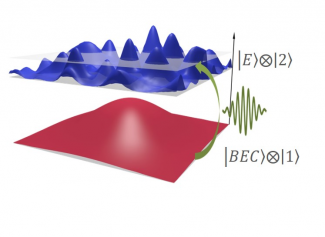Thesis defense of Xudong YU, PhD student in the Quantum gases group of the LCF, on Thursday 07 December 2023 at 9.30am dans in the Auditorium of the Institut d'Optique Graduate School in Palaiseau, on the topic: "3D Anderson Transition with Ultracold Atoms in Disordered Potential: Towards the Measurement of the Mobility Edge."
Abstract: "The Anderson Localization has been intensively studied both theoretically and experimentally since its discovery in 1958. In recent decades, the ultracold atoms emerge as an excellent candidate to perform experiment on the Anderson Localization. The realization of Anderson Localization in 1D and 3D, performed on our setup, has been major breakthroughs on this topic, showing the encouraging potential to study this phenomenon with ultracold atom experiments.
Our research has focused on a direct experimental determination of the mobility edge in 3D, which is the energy at which the Anderson Transition occurs and divides the localized and diffusive phases. Previous experiments have shown large discrepancies with numerical predictions, which highlights the need for more accurate measurements. Additionally, the large energy distribution of atoms in disorder in those experiments prevents direct measurement.
In this work, we have developed a novel spectroscopic scheme with bichromatic speckles that enables a direct and precise measurement of the mobility edge. We utilize the two hyperfine levels of $\ce{^{87}Rb}$ atoms, making one of them sensitive to disorder and the other free to disorder. The radiofrequency transfer from the initial state to the disordered state enables energy-resolved loading, and the bichromatic speckles ensure the long lifetime of disordered state atoms, allowing measurement of the slow diffusion dynamics.
This method, known as "spectroscopic transfer," has allowed us to identify the presence of a critical energy, in excellent agreement with numerical simulations. This preliminary result, subject to various improvements discussed in the manuscript to eliminate the presence of residual excitations, represents a significant advancement in the field and demonstrates the potential of the method established for the precise study of the 3D Anderson transition, spanning from the mobility threshold to the behavior within the critical regime."

